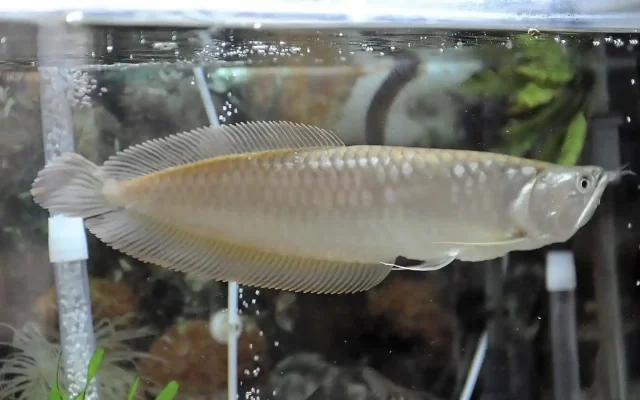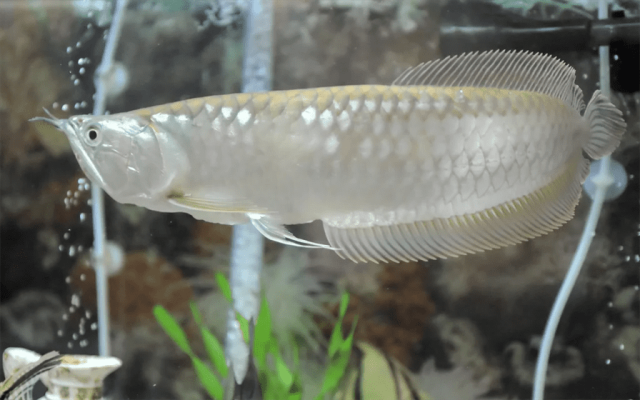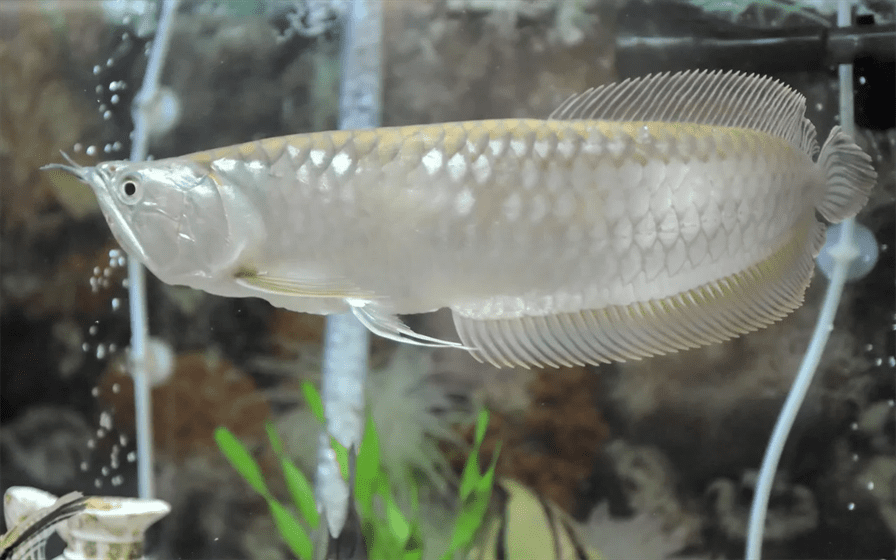Jardini Arowana Care: Master the Art of Keeping Dragon Fish (2024)
Jardini Arowana Care: Master the Art of Keeping Dragon Fish (2024)
Ever dreamed of having a living dragon in your aquarium? Well, you’re in luck! The Jardini Arowana, often called the Australian dragon fish, is as close as you’ll get to a mythical beast in your home. Did you know that these magnificent creatures can live up to 50 years in captivity? That’s right – you might need to include your Jardini in your will! But before you dive into the world of dragon fish keeping, From their prehistoric appearance to their intelligence that rivals some dogs, Jardini Arowana care are truly one-of-a-kind pets. So, buckle up as we embark on a journey to become master dragon keepers with our Jardini Arowana Care
Understanding the Jardini Arowana Care
The Jardini Arowana (Scleropages jardini), also known as the Australian arowana or pearl arowana, is a magnificent freshwater fish native to northern Australia and southern New Guinea. These prehistoric-looking creatures have captivated aquarium enthusiasts for decades with their dragon-like appearance and intelligent behavior.

Origin and Natural Habitat
Jardini Arowanas inhabit slow-moving rivers and floodplains in their native range. They’re well-adapted to environments with:
- Dense vegetation
- Fluctuating water levels
- Warm temperatures
Physical Characteristics and Unique Features
These aquatic dragons boast several distinctive features:
- Elongated, streamlined body
- Large, upward-facing mouth
- Prominent scales with a pearlescent sheen
- Ability to jump out of water to catch prey
Did you know? Jardini Arowanas can grow up to 4 feet (1.2 meters) in length!
Lifespan and Growth Rate in Captivity
With proper care, Jardini Arowanas can live for:
- 20-25 years in captivity
- Some specimens may even reach 30-40 years
Their growth rate is relatively fast, especially in the first few years:
| Age | Approximate Length |
|---|---|
| 1 year | 10-12 inches (25-30 cm) |
| 2 years | 18-20 inches (45-50 cm) |
| 3 years | 24-26 inches (60-65 cm) |
| 5+ years | 30-36 inches (75-90 cm) |
Behavioral Traits and Intelligence Level
Jardini Arowanas are known for their:
- High intelligence
- Curious nature
- Territorial behavior
- Ability to recognize their owners
Setting Up the Perfect Dragon’s Lair
Creating an ideal environment for your Jardini Arowana is crucial for its health and well-being.
Minimum Tank Size Requirements
For healthy growth, provide:
- At least 250 gallons (950 liters) for a single adult
- Longer tanks are preferable to tall ones
- Minimum dimensions: 8 feet long, 2 feet wide, 2 feet tall
Optimal Water Parameters
Maintain these conditions for your aquatic dragon:
- Temperature: 75-82°F (24-28°C)
- pH: 6.5-7.5
- Hardness: 5-15 dGH
Essential Filtration and Water Flow Systems
Invest in:
- High-quality canister filters
- Powerful water pumps for adequate circulation
- UV sterilizers to prevent algae growth
Lighting Setup for Mimicking Natural Habitat
Use:
- Subdued lighting to mimic their natural environment
- LED lights with adjustable intensity
- Floating plants to provide shade
Suitable Substrate and Décor Choices
Opt for:
- Fine gravel or sand substrate
- Driftwood and large, smooth rocks
- Hardy, robust plants like Anubias or Java Fern.

Feeding Your Aquatic Dragon
Proper nutrition is key to maintaining the health of your Jardini Arowana.
Natural Diet in the Wild
In their natural habitat, Jardini Arowanas consume:
- Small fish
- Insects
- Crustaceans
- Occasionally, small mammals or birds
Best Food Options for Captive Jardini Arowanas
Offer a varied diet including:
- Live or frozen fish (e.g., goldfish, minnows)
- High-quality pellets formulated for predatory fish
- Insects such as crickets or mealworms
- Occasional treats like shrimp or lean beef heart
Feeding Schedule and Portion Control
Adhere to: Jardini Arowana Care
- Feeding 2-3 times per week for adults
- Offering an amount they can consume in 2-3 minutes
- Adjusting portions based on the fish’s size and activity level
Avoiding Common Dietary Pitfalls
Be cautious of:
- Overfeeding, which can lead to obesity
- Relying solely on one type of food
- Feeding live goldfish exclusively, as they lack essential nutrients
Choosing Compatible Tank Mates
While Jardini Arowanas are generally solitary, careful selection of tank mates is possible.
Factors to Consider When Selecting Tank Mates
Look for fish that are:
- Large enough not to be seen as prey
- Fast-swimming to avoid aggression
- Peaceful and non-territorial
Fish Species That Can Coexist with Jardini Arowanas
Consider:
- Silver dollars
- Large plecos
- Mature oscars
- Peaceful catfish species
Species to Avoid and Potential Risks
Steer clear of:
- Small fish that may be eaten
- Aggressive or territorial species
- Slow-moving bottom dwellers
Breeding Jardini Arowanas: A Challenging Endeavor
Breeding Jardini Arowanas in captivity is complex and rarely successful outside of professional breeding facilities.
Identifying Male and Female Jardini Arowanas
Look for:
- Females tend to be slightly larger and fuller-bodied
- Males may have a more pronounced lower jaw
Creating the Ideal Breeding Environment
Provide:
- A very large tank or pond (1000+ gallons)
- Pristine water conditions
- Plenty of hiding spots and vegetation
Understanding the Spawning Process
Be aware that:
- Jardini Arowanas are mouthbrooders
- The male incubates the eggs in his mouth for 50-60 days
- Spawning is rare in captivity and requires expert care
Caring for Jardini Arowana Fry
If successful:
- Remove fry to a separate rearing tank
- Feed newly hatched brine shrimp and micro-worms
- Gradually introduce larger foods as they grow
Maintaining Dragon Health: Prevention and Care
Regular monitoring and preventive care are essential for keeping your Jardini Arowana healthy.
Signs of a Healthy Jardini Arowana
Look for:
- Clear, bright eyes
- Smooth, undamaged scales
- Active swimming behavior
- Good appetite
Common Health Issues and Their Symptoms
Watch out for:
- Dropsy (swollen abdomen)
- Fin rot (frayed or discolored fins)
- Ich (white spots on body and fins)
- Hole-in-the-head disease (lesions on head and lateral line)
Preventive Measures and Regular Health Checks
Implement:
- Weekly water tests and regular water changes
- Quarantine of new fish before introduction
- Periodic examination of scales, fins, and overall condition
Treatment Options for Sick Jardini Arowanas
Consult a veterinarian specialized in fish for:
- Appropriate medications
- Proper dosage and treatment duration
- Adjustments to water parameters if necessary
Legal and Ethical Considerations
Owning a Jardini Arowana comes with responsibilities beyond just care.
CITES Regulations and Legal Requirements
Be aware that:
- Jardini Arowanas are not CITES-listed, unlike Asian arowana species
- Import/export regulations may vary by country
- Always purchase from reputable, licensed dealers
Ethical Aspects of Owning These Majestic Fish.

Consider:
- The long-term commitment (20+ years)
- The need for a very large aquarium
- The responsibility of providing optimal care throughout their lifespan
Conservation Status and Efforts to Protect Wild Populations
Understand that:
- Jardini Arowanas are not currently considered threatened in the wild
- Habitat destruction poses a potential future threat
- Supporting conservation efforts helps ensure their survival
Key Takeaways: Jardini Arowana Care
- Jardini Arowanas require large tanks (250+ gallons) and excellent water quality
- A varied diet of live foods and high-quality pellets is essential
- Regular health checks and preventive care are crucial
- Breeding is challenging and rarely successful in home aquariums
- Consider the long-term commitment and ethical aspects of ownership.
read more:
Congratulations! You’re now armed with the knowledge to become a true Jardini Arowana whisperer. From creating the perfect dragon’s lair to mastering the art of feeding these majestic creatures, you’re well on your way to providing an exceptional home for your aquatic dragon. Remember, owning a Jardini Arowana is not just a hobby – it’s a long-term commitment that can bring years of joy and fascination. As you embark on this exciting journey, always prioritize the well-being of your scaly friend and stay informed about the latest care techniques. Who knows? With proper care, your Jardini Arowana might just outlive your smartphone collection!
So, are you ready to dive into the world of dragon fish keeping?
The adventure awaits!
FAQ on Jardini Arowana Care
- How big do Jardini Arowanas get? Jardini Arowanas can grow up to 4 feet (1.2 meters) in length.
- What do Jardini Arowanas eat? They eat small fish, insects, crustaceans, and occasionally small mammals or birds in the wild. In captivity, they should be fed a varied diet of live or frozen fish, high-quality pellets, and insects.
- How long do Jardini Arowanas live? With proper care, they can live 20-25 years in captivity, with some specimens reaching 30-40 years.
- Are Jardini Arowanas aggressive? They can be territorial and may show aggression towards tank mates, especially smaller fish.
- Can Jardini Arowanas be kept with other fish? Yes, but careful selection of large, fast-swimming, and peaceful species is necessary.
- How often should I feed my Jardini Arowana? Adult Jardini Arowanas should be fed 2-3 times per week.
- Are Jardini Arowanas endangered? They are not currently considered threatened in the wild, but habitat destruction poses a potential future threat.
Citations/References
- FishBase – www.fishbase.se
- National Geographic – www.nationalgeographic.com
- University of California – www.uc.edu
- World Wildlife Fund – www.wwf.org


 Deutsch
Deutsch